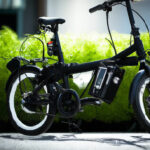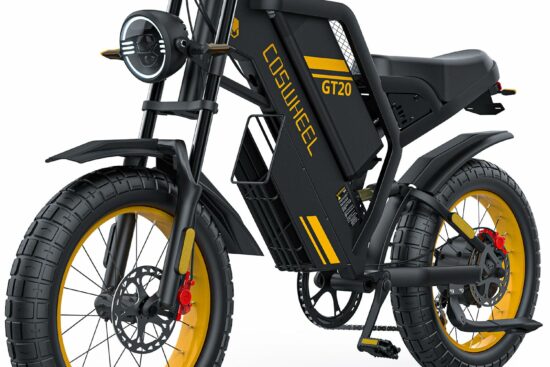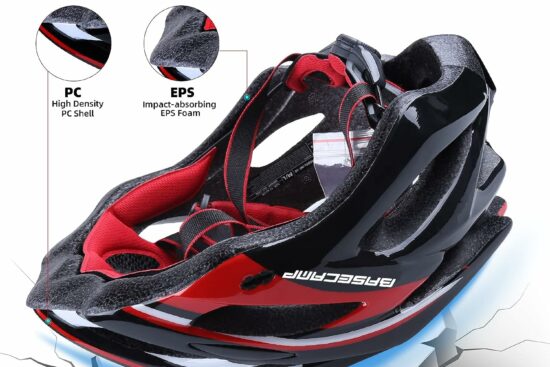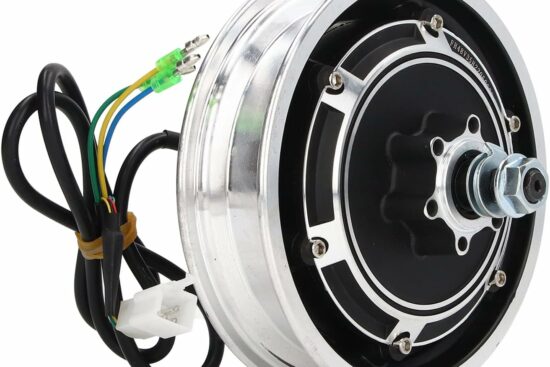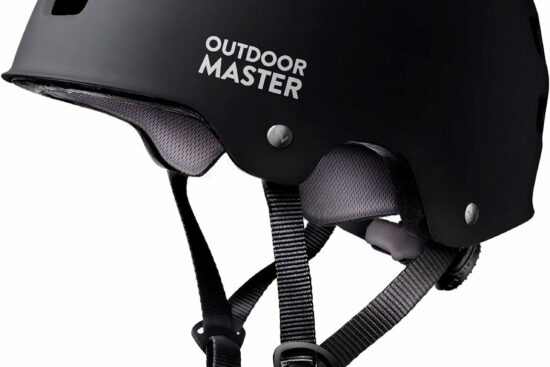
In this article, you will discover valuable tips and techniques for safely navigating through traffic on an electric bike. With the increasing popularity of electric bikes, it is crucial to understand the best practices in order to stay safe on the road. Whether you’re a seasoned cyclist or new to riding, these strategies will help you confidently maneuver through bustling streets and ensure a smooth and secure commute. From being mindful of your surroundings to maintaining a defensive riding mindset, this article will equip you with the knowledge to navigate traffic safely and avoid potential accidents.
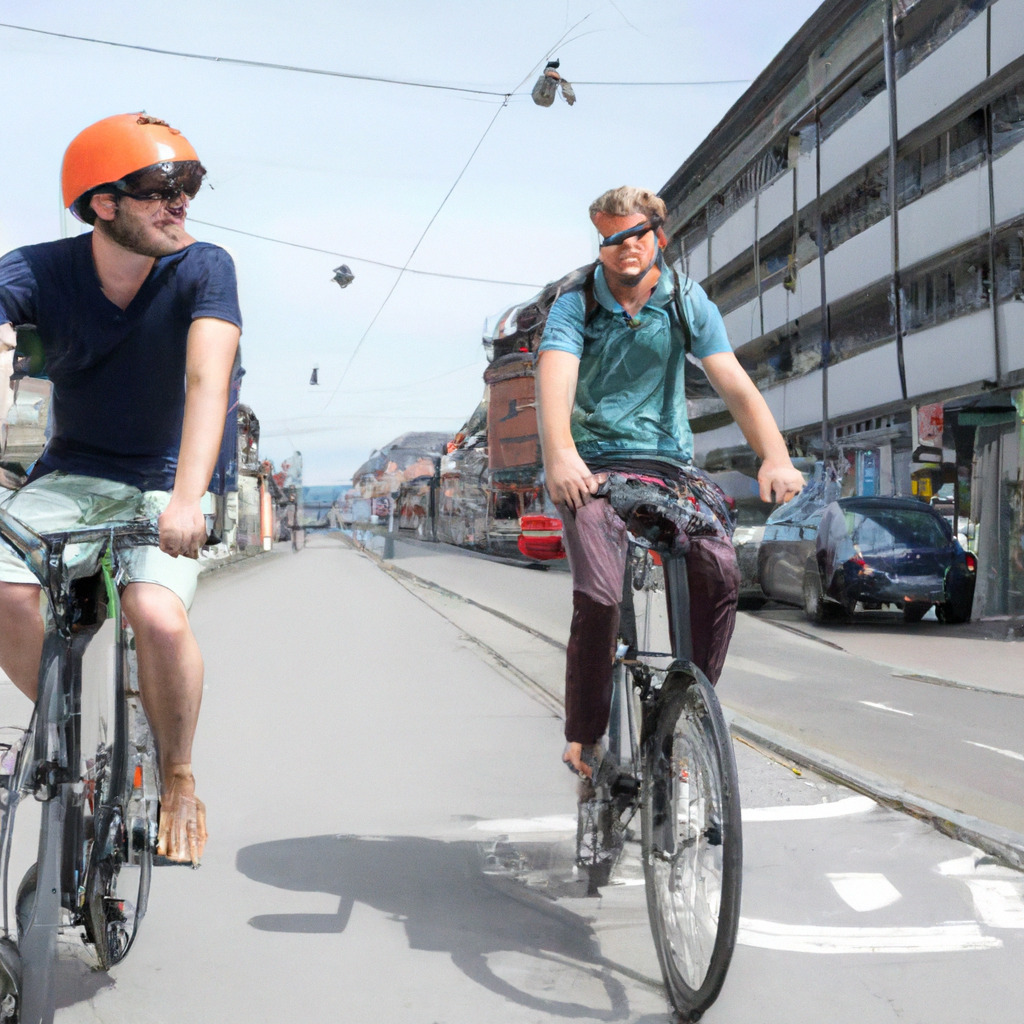
Choose the Right Electric Bike for Traffic Safety
Consider the Bike’s Top Speed
When choosing an electric bike for navigating traffic safely, it is important to consider the bike’s top speed. Different electric bikes have varying maximum speeds, and it is crucial to select one that aligns with the speed limits and flow of traffic in your area. Opting for a bike with a top speed that matches or exceeds the speed limit will ensure that you can keep up with the traffic and minimize the risk of collisions or conflicts with other vehicles on the road.
Look for a Sturdy Frame and Good Brakes
A sturdy frame and reliable brakes are essential features to prioritize when choosing an electric bike for traffic safety. A durable frame will provide stability and support, especially when navigating through congested areas or encountering uneven road conditions. Good brakes, such as disc brakes, will allow you to have more control over your bike’s speed, making it easier to react to sudden stops or obstacles on the road. Investing in a bike with a solid frame and high-quality brakes will greatly enhance your safety while riding in traffic.
Opt for Wide Tires for Stability
Wide tires are another important consideration when selecting an electric bike for traffic safety. These tires provide improved stability, especially when riding on uneven surfaces or in wet conditions. Wide tires offer better traction and grip on the road, reducing the risk of skidding or losing control of the bike. By choosing an electric bike with wider tires, you enhance your ability to navigate through traffic safely and confidently, even in challenging weather conditions.
Choose a Bike with Good Lighting and Reflectors
Visibility is crucial when riding in traffic, and one of the best ways to enhance your visibility to other road users is to choose an electric bike with good lighting and reflectors. Opt for a bike that has front and rear lights that are visible from a distance, as well as reflectors on the wheels, pedals, and frame. These features will make you more easily seen by motorists, especially in low-light conditions or at night. Increasing your visibility on the road is an important step in ensuring your safety while riding an electric bike in traffic.
Wear the Proper Safety Gear
Always Wear a Helmet
Wearing a helmet is a non-negotiable safety precaution when riding an electric bike, particularly in traffic. A properly fitted helmet can protect your head in the event of a collision or fall, reducing the risk of serious head injuries. It is crucial to choose a helmet that meets safety standards and fits snugly on your head. Make it a habit to wear your helmet every time you ride your electric bike, regardless of the distance or the intensity of traffic. Your helmet is your first line of defense against potential accidents and can significantly mitigate the severity of head injuries.
Use Reflective Clothing and Accessories
In addition to a helmet, wearing reflective clothing and accessories greatly enhances your visibility to other road users, especially in low-light conditions. Invest in reflective jackets, vests, or bands that can be easily seen by motorists. These items will make you stand out and significantly reduce the chance of being overlooked by drivers. Reflective accessories such as ankle bands or gloves can further improve your visibility, making it easier for others on the road to anticipate your movements and react accordingly.
Consider Wearing Gloves and Elbow/Knee Pads
While wearing gloves and protective padding may not be mandatory by law, they can provide an extra layer of protection during potential accidents or falls. Gloves enhance your grip on the handlebars and protect your hands in the event of a fall. Elbow and knee pads can help absorb the impact and reduce the risk of serious injuries if you were to encounter a crash. Considering the vulnerable nature of these body parts, it is always better to err on the side of caution and wear protective gear when riding your electric bike in traffic.
Be Familiar with Traffic Laws and Regulations
Learn the Local Traffic Laws
One of the most important steps to safely navigate traffic on an electric bike is to be familiar with the local traffic laws. Take the time to educate yourself about the specific rules and regulations that apply to cyclists in your area. Understand the rights and responsibilities of cyclists when sharing the road with other vehicles. Knowledge of traffic laws will help you make informed decisions, anticipate the behavior of other road users, and ensure that you are operating your electric bike within the legal boundaries.
Understand Electric Bike-Specific Laws
In addition to general traffic laws, it is crucial to familiarize yourself with any electric bike-specific laws that may apply in your region. Different jurisdictions may have specific regulations regarding the maximum speed, power output, and age restrictions for operating electric bikes. Understanding these laws will ensure that you are using your electric bike in compliance with local regulations and will help you avoid potential penalties or legal issues. Stay updated on any changes to these laws, as they may be subject to revisions over time.
Stay Updated on Any Rule Changes
Traffic laws and regulations can evolve over time, so it is essential to stay updated on any changes that may affect electric bike riders. Keep track of any amendments or revisions to legislation pertaining to cycling or electric bike usage in your area. Stay informed through official government websites, local news sources, or bicycle advocacy groups. By staying aware of rule changes, you can adjust your riding habits accordingly and ensure that you are always operating your electric bike safely and legally.
Plan Your Route Ahead of Time
Choose Bike-Friendly Streets and Paths
When navigating traffic on an electric bike, it is important to plan your route in advance to prioritize bike-friendly streets and paths. Look for roads that have dedicated bike lanes or wide shoulders that allow for comfortable cycling. These bike-friendly areas provide a safer space for you to ride, separate from regular vehicle traffic. Utilizing bike-friendly streets and paths will minimize the chances of encountering conflicts with automobiles and make your overall cycling experience safer and more enjoyable.
Consider Traffic Volume and Speed
Take into account the traffic volume and speed when planning your route. Some roads may have heavy traffic during certain times of the day, such as rush hour, while others may have higher speed limits that may not be conducive to safe electric bike riding. Choose routes that have lighter traffic and slower speeds, allowing you to navigate through traffic more comfortably. Avoid roads that are known for aggressive drivers or have a history of accidents involving cyclists. Prioritizing less congested and slower-paced routes will significantly reduce the potential risks associated with riding an electric bike in traffic.
Utilize Mapping Apps or GPS Devices for Navigation
In the digital age, mapping apps and GPS devices can be invaluable tools for navigating traffic on your electric bike. Utilize these technological aids to plan your route and receive turn-by-turn directions. Many mapping apps offer cycling-specific settings that prioritize bike-friendly routes and avoid busy roads. These apps can also provide real-time updates on potential traffic congestion or road closures, allowing you to adjust your route accordingly. Using mapping apps or GPS devices ensures that you have a reliable navigation system to guide you through traffic, reducing the chances of getting lost or making sudden, unsafe maneuvers.

Stay Alert and Aware of Your Surroundings
Keep Your Eyes on the Road
Staying vigilant and keeping your eyes on the road is essential for safely navigating traffic on an electric bike. Avoid distractions and focus on the immediate environment around you. Scan the road ahead for potential hazards, such as potholes, debris, or parked cars opening their doors. Be aware of vehicles approaching from behind or turning at intersections. By maintaining a constant awareness of your surroundings, you can react more quickly to any unexpected situations and make informed decisions to keep yourself safe.
Use Mirrors or Rearview Cameras
To enhance your situational awareness, consider using mirrors or rearview cameras on your electric bike. These devices allow you to monitor traffic behind you without having to turn your head, reducing the risk of losing sight of what is happening in front of you. Mirrors can be attached to the handlebars or helmet, providing a clear view of the road behind you. Rearview cameras can be mounted on the bike, streaming live video footage to a display or your smartphone. Both options give you valuable information about vehicles approaching from the rear, enabling you to respond appropriately and avoid potential collisions.
Listen for Vehicle Sounds
While visual observation is crucial, it is also important to listen for vehicle sounds when navigating traffic on your electric bike. Sound cues, such as engine sounds or honking, can alert you to the presence of vehicles, especially those approaching from blind spots or turning without signaling. By using your sense of hearing in conjunction with your visual awareness, you enhance your ability to detect potential hazards and react accordingly. Avoid using headphones or playing music at high volumes, as this can impair your ability to hear important auditory cues.
Avoid Distractions
Distracted riding can significantly compromise your safety when navigating traffic on an electric bike. Avoid using your phone or engaging in activities that take your focus away from the road. Texting, browsing social media, or listening to loud music can divert your attention from potential hazards, increasing the likelihood of accidents. Keep your hands on the handlebars and your focus on the road at all times. By eliminating distractions, you can remain fully present and better equipped to react to any unexpected situations that may arise while riding in traffic.
Ride Defensively and Predictably
Anticipate Potential Hazards
Adopting a defensive riding mindset is crucial when navigating traffic on an electric bike. Anticipate potential hazards by scanning the road ahead and looking out for any dangers that may arise. Be prepared for sudden stops, vehicles changing lanes, or pedestrians crossing the street. By staying one step ahead and expecting the unexpected, you can react promptly and avoid dangerous situations. Defensive riding allows you to take control of your own safety and helps reduce the risk of accidents caused by the actions of other road users.
Observe Traffic Flow
When riding in traffic, it is important to observe the flow of traffic and adapt your riding style accordingly. Avoid rapid or erratic movements that can confuse or surprise other road users. Instead, strive to maintain a steady and predictable pace. Obey traffic signals and signs, and yield to vehicles when necessary. By aligning your riding style with the flow of traffic, you become more visible and predictable to others, enhancing overall safety for everyone sharing the road.
Signal Your Intentions Clearly
Signaling your intentions clearly is crucial for communicating with other road users and ensuring a smooth and safe flow of traffic. Use hand signals to indicate your upcoming turns or lane changes. Extend your arm straight out to the left to signal a left turn, or bend your left arm upward at a 90-degree angle to signal a right turn. Similarly, use your right arm for signaling right turns. By signaling your intentions clearly and in a timely manner, you provide valuable information to motorists and reduce the risk of collisions or misunderstandings.
Maintain a Safe Following Distance
Maintaining a safe following distance is essential when riding an electric bike in traffic. Keep a sufficient distance behind vehicles in front of you, allowing yourself enough time and space to react to sudden stops or changes in traffic flow. As a general guideline, aim to leave at least 3 to 4 seconds of distance between your bike and the vehicle ahead. This buffer zone allows for better observation and reaction time, reducing the risk of rear-end collisions. By maintaining a safe following distance, you create a safety cushion that can prevent accidents, especially in situations where motorists may not expect a cyclist to be present.
Be Mindful of Lane Positioning
Ride in the Rightmost Lane
When navigating traffic on an electric bike, it is generally advised to ride in the rightmost lane. This position allows faster-moving vehicles to pass you more easily and safely. Riding in the rightmost lane reduces the likelihood of conflicts with other vehicles and minimizes the need for sudden lane changes. However, be mindful of your surroundings and adjust your lane positioning as needed to avoid potential hazards or to make left turns when necessary. Flexibility in lane positioning is key to maintaining both your safety and the flow of traffic.
Avoid Riding in Blind Spots
To increase your visibility and reduce the risk of accidents, it is crucial to avoid riding in the blind spots of larger vehicles. Trucks, buses, or larger cars often have significant blind spots where the driver’s visibility is limited. Riding in these blind spots can make it difficult for drivers to see you, increasing the chances of a collision. If you find yourself in a vehicle’s blind spot, either accelerate to pass quickly or decelerate to fall back behind the vehicle until you are visible in their mirrors. By avoiding blind spots, you greatly enhance your safety while sharing the road with larger vehicles.
Take Advantage of Bike Lanes and Shoulders
Where available, bike lanes and shoulders can provide a safer space for riding in traffic. Take advantage of these designated areas whenever possible. Bike lanes offer a dedicated space for cyclists, separate from vehicle traffic, allowing for a more comfortable and secure ride. Shoulders can also provide an extra buffer zone between you and passing vehicles. However, be cautious and watch for obstacles or debris in bike lanes or on shoulders, as they may not always be well-maintained. Use these designated spaces wisely to maximize your safety and convenience while navigating traffic on your electric bike.
Exercise Caution at Intersections
Approach Intersections with Care
Intersections can be particularly hazardous when riding an electric bike in traffic. Approach intersections with caution and be prepared to react to changing traffic conditions. Slow down as you approach a red light or stop sign, allowing yourself ample time to observe the movements of other road users. Look out for turning vehicles, pedestrians, or cyclists who may be crossing your path. By approaching intersections with care, you can reduce the risk of collisions and ensure your own safety when navigating through traffic.
Make Eye Contact with Drivers
When crossing paths with vehicles at intersections, strive to establish eye contact with drivers whenever possible. Eye contact can be an effective means of communication, as it ensures that the driver acknowledges your presence and is aware of your intentions. Making eye contact with drivers before proceeding through an intersection can prevent misunderstandings and reduce the risk of collisions. Be prepared to yield the right of way if necessary, and only proceed when you are confident that it is safe to do so.
Be Cautious of Right-Turning Vehicles
One of the most common types of collisions involving cyclists at intersections is with right-turning vehicles. Be particularly cautious when riding alongside or approaching vehicles that may be turning right. Vehicles often turn across the path of cyclists without realizing they are present. To avoid these types of collisions, position yourself to the left of right-turning vehicles, so they can see you in their mirrors or peripheral vision. Making yourself visible and positioning yourself appropriately can help prevent dangerous right-hook situations and maintain your safety on the road.
Use Hand Signals to Communicate
Signal for Turns and Lane Changes
Using hand signals to communicate your intentions is a vital aspect of safe and effective cycling in traffic. Signal your turns and lane changes using the appropriate hand signals. Extend your arm straight out to the left to signal a left turn, or bend your left arm upward at a 90-degree angle to signal a right turn. Be sure to hold your signals steady and maintain control of your electric bike while signaling. Clear and consistent hand signals allow motorists to anticipate your movements, reducing the risk of collisions and promoting a harmonious interaction between cyclists and vehicles on the road.
Use Hand Signals Clearly and Early
To ensure that your hand signals are effective, it is important to use them clearly and early. Begin signaling well in advance of your intended action, allowing other road users ample time to observe and react to your signals. Signal with confidence, holding your arm out fully and maintaining a steady position until you have completed your maneuver. Clear and early hand signals give motorists and other cyclists the information they need to adjust their actions accordingly, enhancing safety and minimizing the potential for misunderstandings or conflicts on the road.
Develop Excellent Bike Handling Skills
Practice Balancing and Maneuvering
Developing excellent bike handling skills is essential for safely navigating traffic on an electric bike. Take the time to practice balancing and maneuvering your bike in a variety of situations. Practice riding in a straight line, making controlled turns, and navigating through obstacles. By improving your bike handling skills, you become more confident and capable of responding to unexpected situations, allowing for a smoother and safer interaction with traffic.
Learn to Brake Smoothly and Gradually
Mastering the art of braking smoothly and gradually is crucial for maintaining control and safety on an electric bike in traffic. Practice applying the brakes evenly, gradually reducing your speed instead of making sudden stops. Learning to modulate your braking allows for better control over your bike’s speed, particularly when encountering sudden obstacles or slowing traffic. Smooth and gradual braking reduces the risk of skidding or losing control and minimizes the chances of collisions with other vehicles on the road.
Improve Cornering and Steering Techniques
Another important aspect of bike handling skills is cornering and steering techniques. Cornering effectively allows you to navigate turns with confidence and control. Practice leaning into turns, distributing your weight evenly between the bike’s tires. Steer smoothly and avoid making sudden or jerky movements that can compromise your balance or traction. By improving your cornering and steering techniques, you enhance your overall control of the bike, making it easier to navigate through traffic and respond to changing road conditions.
In conclusion, navigating traffic safely on an electric bike requires a combination of careful consideration, proper gear, knowledge of traffic laws, route planning, situational awareness, defensive riding, and excellent bike handling skills. Choosing the right electric bike with appropriate top speed, a sturdy frame, good brakes, wide tires, and adequate lighting and reflectors is crucial for traffic safety. Wearing proper safety gear, including a helmet, reflective clothing, and gloves and pads, enhances visibility and reduces the risk of injuries. Being familiar with traffic laws and regulations, planning routes ahead of time, staying alert to surroundings, riding defensively and predictably, and using hand signals to communicate are important practices to ensure safety. Proper lane positioning, cautious approach at intersections, and continuous development of bike handling skills further contribute to safe navigation through traffic on an electric bike. By following these guidelines, you can confidently and safely enjoy riding your electric bike in traffic.



